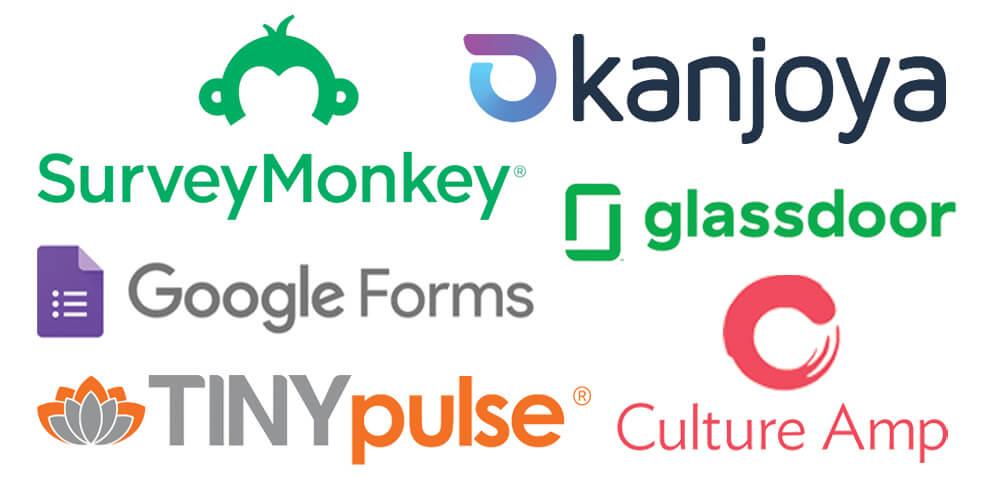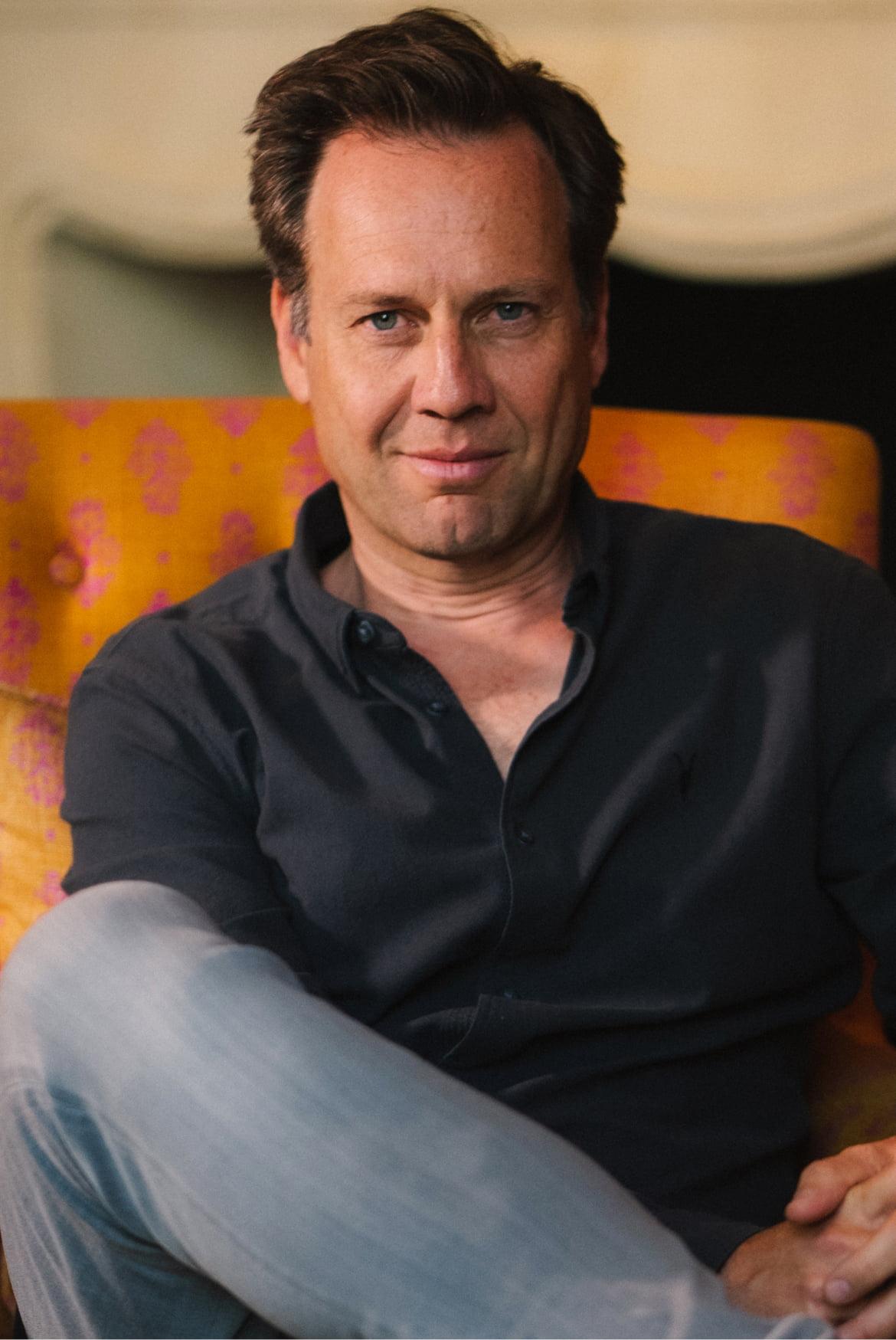

The engine of high-performing teams is strong company culture.


We’ve seen it in countless companies across countless categories: great culture is what enables teams of people to defy the odds and achieve the remarkable. It lets companies grow and scale with far fewer coordination costs.
When we were first building companies we knew culture was important, but it wasn’t clear what that meant or where to start.
We found or wrote playbooks for growth, sales, product, engineering, testing, and so on. But we’ve never found a quick, tactical resource for building high-performing cultures.
This is that resource. The NFX Company Culture Scorecard & Manual is a simplified playbook for a low-time-commitment approach to laying the foundation of exceptional company culture.
At NFX, we are committed to helping world-class Founders build lasting companies that achieve rapid growth and make an impact. As astute Founders know, company culture plays a substantial role in getting there.
The good news is that it’s never too late – or too early – to start thinking about company culture.
The NFX Company Culture Scorecard
The NFX Company Culture Manual
Use this manual to improve your score on The NFX Company Culture Scorecard. It walks you through a streamlined process for building an exceptional company culture that you and your team will want to work in:
Part 1: How to Find Your Company Values
Part 2: How to Ship Your Company Values
Part 3: How to Program Your Culture
– Storytelling
– Products
– Team Relationships
– Hiring
– Employee Onboarding
Part 4: How to Measure and Iterate
Let’s get started.
Part 1: Find Your Company Values
At its core, company culture is driven by values. In his famous Netflix culture deck Reed Hastings wrote, “values are what we value”.
How To Find Your Company Values
Start by gathering a group of 2-10 key employees from different departments, including all Founders. If you’re an early-stage startup this could be the whole company, but if you’re a larger organization you’ll need to be more thoughtful. You don’t have to include everyone, and should exclude people who won’t be productive to have in the meeting. The individuals in the room should be your organization’s cultural carriers: individuals that represent the values you want to create.
Brainstorm (10-Minutes) – Start by giving everyone a list of values to choose from to get their juices going. We’ve compiled a list here. Have each person in the room pick from 3-12 the values that most represent the culture your company aspires to have.
The goals of good company culture are:
1) Build a culture that the Founders like working in
2) Build a culture that will help the company be successful
3) Be distinct enough to attract and retain the world class people you’ll need
Encourage participants to make up their own values. Have each person write their values in big letters on colored stickies.
Organize The Values into Clusters (10-Minutes) – Have everyone go to the wall all at once and post their stickies. Then let people move the stickies around into clusters based on their meaning.
Discuss (60-Minutes) – Take an hour to collectively discuss and identify the clusters/themes that describe the culture you want to build. Pick one word to represent each cluster. Start to narrow down which clusters are most important to the group.
Analyze (20-Minutes) – As a group, discuss whether or not the values you are narrowing in on achieve the goals of a good culture as summarized above.
Make sure each value is personal and can be supported by memorable stories that each team member can retell. Your values should also be authentic to your company and to your brand: don’t borrow the values of others.
Focus your values so they are aligned with your long-term mission: building a successful business. Keep in mind that having a fun culture, for example, isn’t always synonymous with being a successful company.
Finalize the Words and Create an Acronym (10-minutes) – The more you’re able to structure your values into devices for easier recall, the more likely your team is to use – and remember – your values. So see if you can come up with a good acronym for your values, or some kind of organizing theme. If you can’t, keep choosing words from each cluster until you can get a good word.
For instance, the cultural values defined at Trulia were both an acronym and bound together by an overarching brand theme: IMPACT (Innovation, Make a difference, People matter, Act with integrity, Customer obsessed, Trust and respect).
Part 2: Ship Your Values
Your cultural values are the connective tissue between your company and the world. To make them real, you must “ship them” like a product. Ship them to both your employees and your customers.


Company workspaces play a critical role in shipping company culture. Having your values visible makes it easier for your team to adopt them. Take the time to prominently display your values in meeting spaces, presentation decks, job descriptions, websites, marketing materials, and so on.
There’s a time and a place for each of your values, so get to know them. Their look and feel will vary depending on where they’re displayed (the medium should match the message), but your values should always be recognizable and visible.
Founders often feel they are communicating their values ad nauseum. Yet top startups grow by over 100% headcount every year, so many of your employees are hearing your articulation of the values for the first time. Encourage everyone at your company to err on the side of over-communicating values. This is time that will never be wasted.
We’ve compiled a list of tactics we’ve found useful for effectively disseminating your company values throughout the organization. You can download them as a workbook here.
Have you communicated your values across the following spaces? If not, plot down a quick plan for each.
- Communal spaces (including bathrooms)
- Meeting & conference rooms
- Website
- Social sites (LinkedIn, AngelList, Facebook, Twitter, Instagram, Hacker News etc.)
- Job postings
- Interview questions
- Company-wide emails
- Email signatures
- All Hands meetings
- Appendix slides
- Investor slides
- Conference slides
- Onboarding Handbook
- Annual review process
- Marketing materials
- Desk arrangements
- Business cards
Brainstorm: Set a timer for 5-minutes. Brainstorm other ideas for communicating your values.
Part 3: Program Your Culture
Culture is what do you do when others aren’t watching. Culture is character.
The most effective way to spread, deepen, and maintain your values, even as your company grows, is through rituals that directly support your values. Rituals are where the rubber meets the road. If people aren’t hearing, seeing, or feeling the culture, it’s difficult for them to live it.


The strongest cultures often distinguish themselves through small yet powerful sets of unique rituals. It’s best to create your own rituals rather than borrowing those of others. Observe events or activities that go on in your company – rituals that are occurring naturally and support your values – and scale them up.
If you’re just starting to think about culture you’ll need some help getting started. We’ve compiled a list of thought-starters to inspire you here. Pick the rituals that resonate with your organization’s values and find a way to make them your own.
How to Program Your Culture With Rituals
Storytelling
Throughout history, values have been shared most effectively through stories – think of religious texts. From the CEO downward, authentic storytelling through the lens of your values can bring them into the real world and make them feel applicable. Share your stories and share them often.
Since, at its core, your company is about people, it should be a priority for you to highlight the unique people on your team through the lens of your values. When your team or your customers do something awesome, relay that story in a personal way.
Empower other people on your team to articulate your values in a way that’s authentic to them, too. The way your employees communicate your company values is as important as the way Founders communicate their company values. Zappos’ stories of how their employees have gone the extra mile to delight customers haven’t only strengthened the brand’s culture, they’ve helped attract the right kind of talent to the company. Real stories are way more powerful than the repetition of your values as words or phrases.
[Download our comprehensive list of company rituals here]
- Implemented a peer-to-peer value-driven recognition program for your employees.
- Provide employees with a chance to tell their own value stories at staff meetings.
- Take note of how employees are communicating your brand and values.
- Use storytelling in your marketing materials and website (your employees read your website, too).
- Find ways to highlight the unique people on your team (e.g. pick a wall in your office to dedicate to photos of your employees doing things they love outside work).


Products
The best companies have values that inform their products, inside and out. Wise Founders use their values as a compass when making product decisions to ensure everyone is moving in the same direction. Values can help prioritize products, features, and help everyone come to a consensus that’s in line with the company’s goals.
A value-driven framework keeps everyone anchored in the same truth: values are why you’re tackling a problem, and precisely why your solution is so important. The most effective values are reflected in the rituals you instill to measure a product’s success. If you’re customer obsessed, give employees regular access to their customers.
At Square, for example, employees trade shifts in the office’s coffee shop to ensure that every team member gets regular exposure to both their product in the field and their target customers.
If you value quality, provide your team with detailed feedback about the quality of each aspect of the product, and give them abundant time and resources to solve quality issues. If you value speed and innovation, consider implementing a failure wall to make sure everyone’s comfortable failing (or as we like to call it “tumbling toward progress”).
- Use your values as a framework to make product decisions.
- Use your values to determine who makes decisions and when.
- Articulate why you’re tackling the problem and why the solution matters through the lens of your values.
- Ensure you’re measuring success through the lens of your values.
- Find ways to encourage risk-taking.
Team Relationships
Keeping a company moving fast typically requires trust and empathy among the members of the team. Without trust and empathy, it’s impossible for an organization to have a culture of transparency where feedback is freely given and received. These natural bonds sometimes occur naturally over time, but it’s more efficient to accelerate them by planning extracurricular experiences.
Bonds between team members are built quickly when people can see the people they work with beyond job titles. A structured way to build these bonds is to have everyone take a personality test and share the results with their group. But less formal ways can be just as effective, too. Celebrate wins, birthdays, and holidays. Take field days and volunteer offsite. All of these are great opportunities to create rituals that foster team connectivity.
[Download all of our culture hacks in a PDF here]
- Facilitate team activities outside of work.
- Have everyone take a personality test and share the results with their team (e.g. Five Factor Personality Test, Enneagram, Myers-Briggs Test).
- Facilitate bonding through personal sharing.
- Set aside a budget for your employees to get coffee together.
- Create a birthday ritual (e.g. ask everyone to share why they are grateful to have the person whose birthday it is on the team).
- Go out socially to celebrate wins with the team (including dry outings without alcohol).
- Host holiday gatherings.
- Schedule retreats to get people out of the office during work hours.
- Organize regular lunches and dinners for co-Founders.


Hiring
We’re amazed by how many job postings are generic (just look around at what your competitors are doing).
The good news is that putting a little extra effort into your company’s job postings can really make your company shine. Keep the post short, use an easy call-to-action (like “apply here”), and embody your values while honoring the rockstars on your team.
The majority of the job posting should focus on who the ideal candidate is, rather than what the company needs. When you’re in the interview phase, ask questions designed to assess a candidate’s character against each of your values. As Katrina Lake of Stitchfix says “think more about culture-add versus culture-fit.” The right mix of people working together can increase your productivity from 10x to 100x. Diversity of ideas, working styles, and team members will make your products better.
- In addition to listing your job posting on AngelList and LinkedIn, consider listing it on less-common platforms like Instagram, Facebook, Twitter StackOverflow, Reddit, Dribbble or Hacker News. Imagine where on the web your ideal job candidate will be and go there.
- Make your job posting aesthetically pleasing (e.g. upload an image).
- Include video in your job posting.
- Create an awesome jobs page that you can point candidates to (like Everlane).
- Communicate that your company is inclusive so that it appeals to a diverse range of people.
- Use creativity for your job postings (pithy language, humor, bold words, and maybe even bold fonts).
- Focus the majority of the posting on the ideal candidate (rather than your company and its needs).
- Compare your job posting to your competitors’ so you can stand out.
- Keep your job posting concise.
- Use unexpected language that will call the right people to you and dissuade the wrong people from applying.
- Employ an easy call to action, like “click here” or “apply here”.
- Develop a list of interview questions for job candidates that assess their potential fit against each of your values.
- Standardize interview questions to eliminate any biases.
- Consider the unique personalities and strengths of each team member and how the candidate would affect the team.


Employee Onboarding
Strong cultures have strong employee onboarding practices, period. New hires’ experiences should be sequenced with as much care as new users’ experiences.
Highly successful companies move fast and grow fast, so having a repeatable plan for onboarding new hires is critical. Within the onboarding experience, it’s always a good idea for the Founder and/or CEO to lead a 20-minute company culture training presentation on the company’s core values (see “Hiring 101 Zappos Style” for a classic example). Use this as an opportunity to tell your company story: personally explain the origin of each of the company’s values’ and its significance to you and the company. Welcome packages with laptop stickers, free lunches, and company-wide introduction emails go a long way, too.
In short: make sure new hires feel seen, known, and a part of something.
- Have the manager reach out to the new hire before their start date via email, a phone call, or a handwritten note.
- Establish a ritual to make the new hire’s first day memorable (e.g. a surprise snack with their favorite dish).
- Have their workstation setup with everything they need (ID badges, forms, account IDs and passwords).
- Schedule a lunch for the new-hires team (and pay for it).
- Arrange for a complete tour of the office.
- Give them a welcome package (with t-shirts, computer sticker, or a hoodie). Gifts of food can also be nice because it will encourage office mates to stop by their desk.
- Send a company-wide email introducing your new hire to the team in great detail (including where the person grew up, their hobbies, and some cool accomplishments of theirs) so employees know a bit about them.
- Arrange for the Founder to participate in the onboarding process on the new hire’s first day (ideally in-person).
- Walk the new hire through the mission statement and values immediately.
- Personally explain each values’ origin and their significance to the company.
- Teach the new team member the jargon that makes your company feel like a tribe.
- Create a company culture deck for the new hire.
- Have the new hire jump in and start contributing right away (e.g. commit live code or do some lab work that counts).
- Create a tightly structured schedule for the new employee (at least to start) so that they never wonder what to do next and know that you know what they’re doing. Set the cadence high for their work.
- Give the new hire a buddy that takes them to lunch the first day with friends, and checks in with them the first 2 weeks.
- Arrange for the manager to check in with the new hire at the end of the first day, week, month, and quarter. Pay particular attention to see if they feel the job is different or surprising from their expectations.
- Consider adopting Zappos policy of offering new employees $2,000 to quit (If they are not happy, they’ll take the money. If they are happy, they will be happier because they turned down a free $2,000).
- Programmatize the onboarding process and make it repeatable. Assign the onboarding duties to someone to ensure it is followed.


Part 4: Measure and Iterate
If you can’t measure it you can’t manage it. Track company culture the same way you would track customer satisfaction and customer experience.


The best way we’ve seen to do this is a quarterly, anonymous survey. You can use Google forms, SurveyMonkey or some other simple tool. Track the data longitudinally. When you observe a negative trend make it someone’s responsibility to reverse that trend. Iterate accordingly.
We’ve compiled a list of internal culture survey sample questions here to help get started.
Another simple and tested way of soliciting feedback is to make the CEO available for monthly brown bag lunches with different teammates. Scheduling this monthly is typically easy, enjoyable, and time well spent.
Also make sure to have your assistant or a VP keep their eye on Glassdoor.com.


Startups change their direction. Business models change, strategies change, and markets change. As your business matures, it may make sense for some of your values to follow suit. Values are not a sacred cow. They can and should evolve. It’s okay to tweak your values every few years to keep them working in tandem with your business objectives.
The reason you invest in culture is to build a successful company for the long-term. Be mindful that certain cultural aspects or values that enabled early success may inhibit long-term success. Success will amplify your company culture, so the sooner you lay the right foundation the better off you’ll be. Highly successful companies with good cultures can evolve into great companies, whereas highly successful companies with bad cultures become toxic. Constantly revisit the alignment between your cultural values and what’s needed to make the company successful today and in the future.
- Conduct Quarterly Surveys to track your culture through an anonymous platform, like Google Forms, TINYpulse, MoodApp or SurveyMonkey and publish results. You should also be tracking how your employees feel about the company and the leadership team. Here’s a list of survey questions to help you get started.
- Seek out feedback through external channels like Glassdoor.
- Host monthly coffee chats with different teammates.
- Make the CEO available for monthly brown bag lunches open to all.
- Continually improve your culture’s performance by actively iterating on your rituals (use the feedback you get from your surveys to do this).


Final Thoughts
When it comes to culture, a little effort makes a big impact. This manual has boiled down the most effective processes for building culture that also take the least amount of time. Enacting a core number of these culture-building techniques now will save you 50X the time later, and let you devote more of your attention to your business objectives. A good culture powered by strong values will always accelerate the success of the business, and never distract you from it. It will give you the best chance of making something great.
Don’t get bored. To build the right culture, you need to keep repeating your values while shipping and programming your culture. Don’t worry if you feel like you’re repeating yourself too much. You can’t repeat your values enough.
Tie your rituals tightly to your values. Office yoga, warm cookies & free massages don’t create culture if they don’t support and reinforce your values.
Culture is scalable. The more time you spend on culture up front, the less time you’ll spend trying to fix it in the long term. Participating in culture is like flossing: a few minutes of attention each day will save you from painful, costly, and time-consuming crises down the line.
Beyond the Founder. As your culture scales you’ll start to notice the formation of rituals independent of the Founders. Encourage this: it means your culture is scaling. Empower your team to celebrate your company’s values in their own ways.
As Founders ourselves, we respect your time. That’s why we built BriefLink, a new software tool that minimizes the upfront time of getting the VC meeting. Simply tell us about your company in 9 easy questions, and you’ll hear from us if it’s a fit.


